Tag archives: superconductivity
What’s next for superconductivity research?
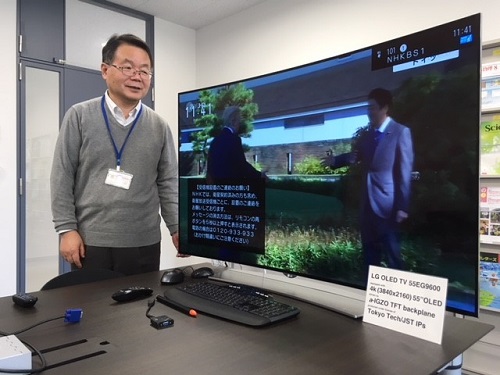
Seeing the bigger picture: Hideo Hosono from the Tokyo Institute of Technology. (Courtesy: Michael Banks)
By Michael Banks in Tokyo, Japan
This morning I took the train to the Tokyo Institute of Technology, which lies about 10 km south-west of Tokyo.
I met with Hideo Hosono who rose to fame almost a decade ago when he found a new class of superconductors known as iron pnictides.
In a 2008 paper, Hosono and colleagues discovered superconductivity in LaOFeAs at 26 K. The crystalline material comprises layers of lanthanum and oxygen sandwiched between layers of iron and arsenic — and is doped with fluoride ions.
View all posts by this author | View this author's profile
Terahertz analytics for better plasmas
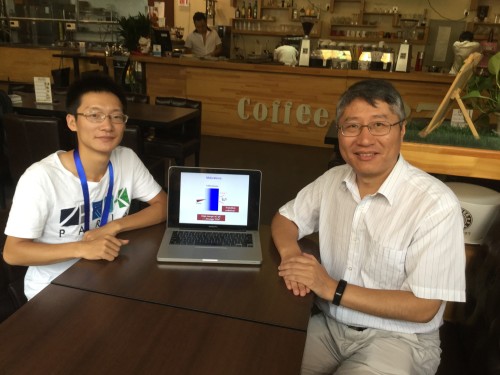
Terahertz generators: Gianqian Liao (left) and Yutong Li.
By Hamish Johnston in Beijing
Today was the last day of the Fall Meeting of the Chinese Physical Society here in Beijing and this morning I grabbed a coffee with Yutong Li and Giuqian Liao. I was hoping to learn more about their work that we covered in May in “Coherent terahertz radiation created in laser plasmas“.
Their technique involves firing a powerful laser pulse at a thin metal foil. This creates a plasma in which electrons are accelerated to high energies before bursting out of the foil. When they emerge, coherent terahertz radiation is given off.
View all posts by this author | View this author's profile
Physics saves humanity, the large rainfall collider and other environmental highlights on Earth Day
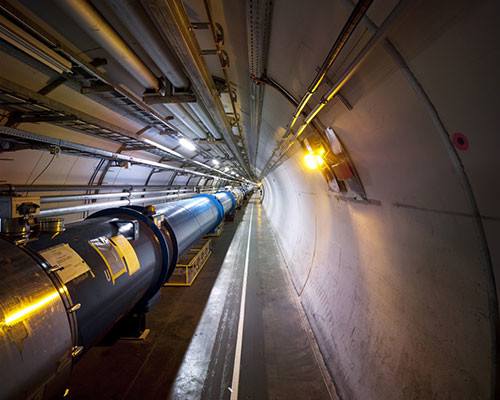
Gravity’s pull: could the LHC be used as a giant rain gauge? (Courtesy: CERN)
By James Dacey and Hamish Johnston
Today is Earth Day, so let’s temporarily rename this regular Red Folder column as the Green Folder. Either way, today we’re going to focus on the Earth and environmental issues. The official website of Earth Day – an initiative now in its 46th year – has details about the various initiatives and events taking place around the world today.
First, let’s pay tribute to a physicist whose work had a profound influence on the climate and energy debate in the UK and beyond. Sir David Mackay died on 14 April aged 48 following a battle with cancer. Mackay is remembered among other things for his pragmatic approach to energy and his 2008 book Sustainable Energy: Without the Hot Air (free access) was hailed for its rigour and refreshing absence of rhetoric. Mackay’s writings attracted the interest of the British government who appointed him as chief scientific adviser to the Department of Energy and Climate Change in 2009, a post he held for five years. Ever prolific, Mackay was blogging about his experiences right up until two days before his death.
Cosmic rays, diamond anvils and spintronics in Utah

A blooming marvellous afternoon at the University of Utah.
By Hamish Johnston in Salt Lake City
Yesterday afternoon I hopped on a tram bound for the University of Utah. As you can see in the above photo, spring has sprung in Salt Lake City and the campus was resplendent in blossoms with views over snow-capped mountains.
I was at the university to film several 100 Second Science videos with Utah physicists including Shanti Deemyad, who studies the properties of matter under extremely high pressures. She is particularly interested in understanding the quantum properties of solids at temperatures near absolute zero – properties that can be enhanced when materials such as lithium are squeezed at pressures that are more than 10 million times greater than Earth’s atmosphere. This is done using a diamond anvil and Deemyad’s lab has 20 or so of them.
View all posts by this author | View this author's profile
What do strange metals and black holes have in common?

Subir Sachdev.
By Hamish Johnston in Waterloo, Canada
Harvard’s Subir Sachdev has just taken the audience here at the Convergence conference on a delightful romp through the phase diagram of the cuprate high-temperature superconductors. What I found most interesting was not the superconducting phase, but rather Sachdev’s description of the “strange metal” phase.
This phase occurs when the cuprate copper-oxide layer is highly doped with holes and has perplexed physicists for some time – hence its strange moniker. It has no quasiparticles and lots of low-energy excitations so there is no easy way to describe the collective behaviour of the electrons.
Exploring the expanding world of high-temperature superconductors
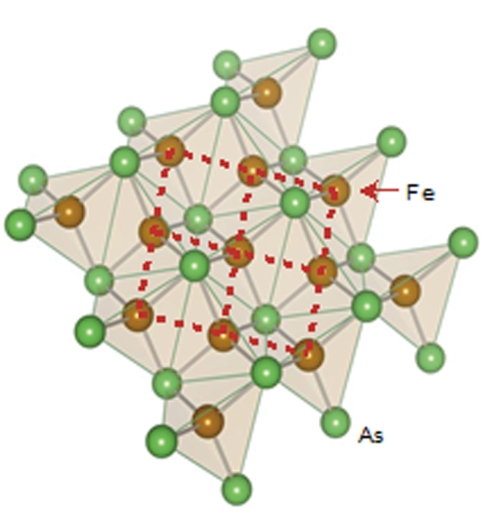
Layered look: iron (brown) and arsenic (green) atoms in the conducting layer of a pnictide.
By Hamish Johnston
High-temperature (high-Tc) superconductivity has given hope and heartbreak in equal measure to physicists since the phenomenon was first discovered in 1986.
The hope is two-fold: that we will soon understand why superconductivity arises in this complex group of materials; and that this knowledge will lead us to a material that is a superconductor at room temperature. The former would be a triumph of the physics of highly correlated systems and the latter would spark a technological revolution.
View all posts by this author | View this author's profile
A theremin fit for a gerbil, hairdos for physicists and the trouble with Richard Feynman
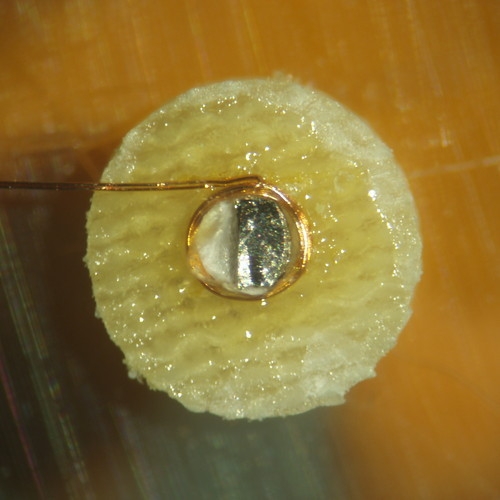
Calling all musical gerbils: a new take on the theremin. (Courtesy: Paul Goddard)
By Hamish Johnston
“How we created spooky experimental music in a superconductor lab”: what physicist could resist clicking on this story, which appeared on the Guardian website earlier this week? Written by the physicist-turned-computational-biologist Andrew Steele, the article describes how Steele and a few pals converted a magnetic sensor into a musical instrument. Like the theremin, which is played by waving your hands around an antenna, this new instrument responds to the player’s motion. But because the sensor was optimized for studying superconductors rather than creating freaky mood music, Steele explains the “instrument covered three octaves in less than a centimetre of hand movement”. He suggests that playing the instrument should probably be left to a talented gerbil rather than talented superconductor researchers. You can listen to Steele’s attempt at making music on SoundCloud.
Robotic cowboys and clams, the SQUID at 50 and more
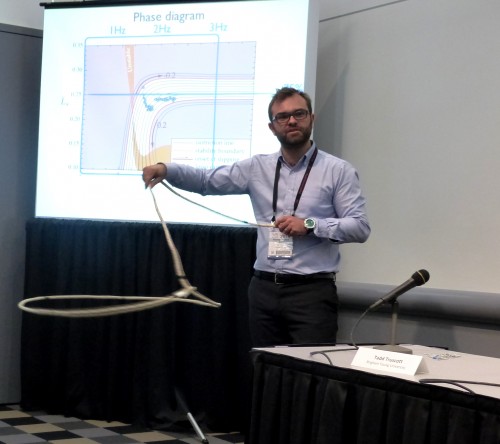
Pierre-Thomas Brun shows off his lassoing skills.
By Tushna Commissariat at the APS March Meeting in Denver
It has been another exceedingly busy day the APS March Meeting – there were sessions on the SQUID’s many applications, robotic clams, global health physics and the spread of epidemics, and even some toys based on physics principles. Here’s another quick round-up of the fascinating talks.
On SQUID row
It’s the 50th birthday of the superconducting quantum interference device or SQUID – a very sensitive magnetometer that accurately measures extremely subtle magnetic fields – this year, and there were sessions this morning to discuss its impact to date as well as possible future applications. Kent Irwin from Stanford University discussed how superconducting photon detectors that are used in a host of astronomical and cosmological observations are being amplified using SQUIDs. Such SQUID-boosted sensors are being used to make more accurate measurements of the cosmic microwave background (CMB) – to look at its power as well as certain polarizations modes it exhibits. As certain experiments look for signs of gravitational waves in in the CMB polarization, this could be particularly helpful.
View all posts by this author | View this author's profile